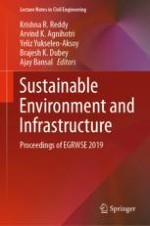2021 | OriginalPaper | Chapter
Utilization of Waste Lime Sludge and Coal Fly Ash in Construction Industry
Authors : Shristi Khosla Kanoungo, Umesh Sharma, Abhishek Kanoungo
Published in: Sustainable Environment and Infrastructure
Publisher: Springer International Publishing
Activate our intelligent search to find suitable subject content or patents.
Select sections of text to find matching patents with Artificial Intelligence. powered by
Select sections of text to find additional relevant content using AI-assisted search. powered by
